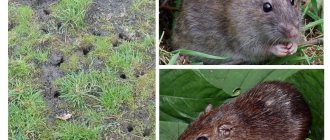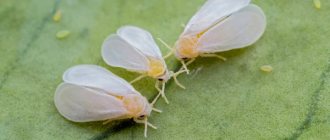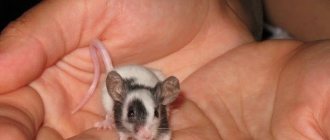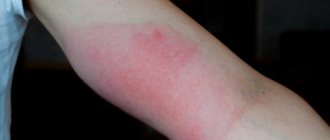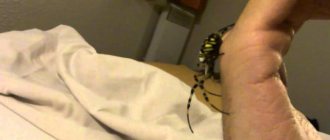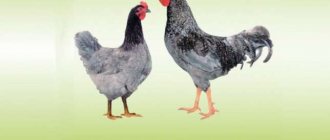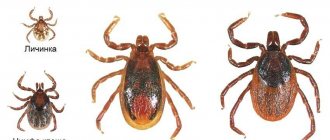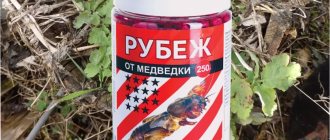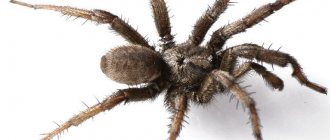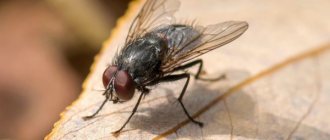- November 26, 2018
- Hunting
- Ekaterina Gordeeva
The farmer went out into the garden in the morning and grabbed his head. All the crops are turned inside out, there are strange holes around them. And the roots are gnawed.
Who did it? The first thought is that the moles tried. These diggers had nothing to do with it, because the river rats came to visit. If there is a body of water nearby, it’s definitely their business.
We'll talk about these animals in more detail in the article.
Who are you?
What kind of animal is a water rat? A pest that farmers and gardeners really dislike. Not only does the cute creature cause damage by damaging seedlings, but it also robs the beds.
River rats are the closest relatives of wild pasyuki. They have extreme gluttony and reproduce quickly. What does the animal look like? More on this below.
Interesting facts about the rodent:
- The water vole is a widespread pest of agricultural crops and pastures. Rodents cause significant damage to all field crops that grow in floodplains and near water bodies. The water vole also causes damage in pastures and hayfields, in gardens and nurseries, in vegetable gardens and vegetable warehouses. This species not only feeds on grain crops, but also makes harvesting difficult. In addition, the water vole damages seedlings of garden and forest trees, thereby causing damage to horticulture and forestry.
- This species is a carrier of the pathogens of tularemia, Omsk hemorrhagic fever, leptospirosis and other diseases that are transmitted by blood.
- Water vole skins are used as fur and are harvested in large quantities.
Description
The word “rat” makes some people cringe. If you look closely, both common and river rats are not so nasty. The latter are not particularly large comrades. They weigh about 250 grams. Their sizes vary from 20 to 25 centimeters.
They look like a pig and a guinea pig at the same time. A sort of strange hybrid: the snout of an underwater rat is short and rectangular, like that of a guinea pig, and the body of a rat is long, flexible, with a thin tail. By the way, the tail is covered with hairs and does not cause such disgust as a bald rat.
The water rat has long and thick fur. The upper part of the body (head, neck and back) is brown-gray. This is where the name came from - water rat. It seems that the color is ugly, but it is not. The photo shows that the animal is quite cute and its color scheme is in order.
The chest and belly of the animals are lighter than the main color.
Appearance
Externally, a vole has a lot in common with an ordinary rat - but its body is shorter, its muzzle is also shortened, and its ears are smaller. But the legs, on the contrary, are longer - but they are not so noticeable because of the fur. The tail of a vole, unlike a rat, is covered with hair and ends in a kind of tassel. It is easy to distinguish a vole from a rat - its incisors are yellow-brown in color.
Where did you come to us from?
What is the name of the water rat and where does it live? We will answer the first part of the question a little later. We will talk about the place of residence of the beast in this subsection.
You can find a surprise in the form of a pest everywhere. The rodent is distributed throughout Russia.
In the warm season, the animal lives calmly in various bodies of water. A pond, a river, a lake—it’s all his family. It can even live in swamps.
With the onset of cold weather, river rats begin to think about a hole. In order to create it, they move to the meadows, where they dig a nest for wintering. “Old pensioners” don’t like to move. They build houses for themselves right in the swamp hummocks or next to their native pond. Is there a dead tree nearby? Rodents are happy and happy. They will make a mink, bring herbs there and spend the winter there.
Enemies and lifespan
Natural enemies of voles are minks, foxes, otters, stoats, weasels, owls, herons, harriers, pikes, brown rats and cats.
Water voles are short-lived and likely have a very high mortality rate in their first year of life. In captivity, they can live up to 5 years, but the average life expectancy in their natural habitat is less than a year.
- European…
- Forest dormouse: where...
- Rodents in life...
- Where do scorpions live?
- River dolphins
- Common spadefoot
Do you want to eat?
What is the official name of the river rat? A little patience, we'll tell you soon.
Let's talk about rodent nutrition for now. What does the animal that lives in and near water bodies eat?
Sedge, reeds, and reed shoots are the main diet of the water rat. They do not disdain marsh plants either. Of course, if they themselves live there.
Why do rats go to a person’s garden if they are provided with food? Rodents' favorite foods grow there. Aquatic comrades love root vegetables: potatoes, for example. Moreover, give them straight tubers, without rot or flaws. For the winter, reserves are made only from these.
They will happily eat beets and carrots. This is a favorite treat of river rats.
During the winter, supplies run out. So the animals have to go into human gardens. It would seem, what can you find there in the spring? People ate everything themselves. But don’t forget about the roots of garden plants. Water rats do not disdain them and eat them with great appetite.
Damage caused
In vegetable gardens, the water rat creates real terror. In just one winter, a family can turn a cultivated area into a source of chaos. Consequences of this proximity include:
. Each individual eats more than 10 kg of food per season. Not only plants in the garden are used, but also stocks of root crops and grain from the cellars;
large crop losses- garden damage . Flower bulbs, apple bark, and trunks of berry bushes are destroyed. Trees begin to get sick easily from wounds;
- destruction of turf . Along with the roots, the top layer of soil, which is very important for plant protection, is damaged;
- damage to the aesthetic appearance . Holes and piles of discarded earth appear on the territory. Visually, the presence of a rat can be confused with moles;
- increased weed growth . Volatile spores of thistle, gillweed and other “bad” grasses instantly settle on damaged turf. It becomes very difficult to get them out. Without proper treatment, the damaged area will remain so the next year;
- disappearance of beneficial insects and amphibians . In especially hungry times, the rodent does not hesitate to eat small bugs, midges, and frogs.
In addition, the water rat can cause serious harm directly to people. Dangerous infectious diseases (hemorrhagic fever, tularemia, leptospirosis) are transmitted to humans through damaged food and bites. Therefore, it is extremely important to weed out damaged root crops and promptly identify the pest that has taken up residence.
Reproduction
Once a female water rat reaches eight weeks of age, it can give birth to pups.
Reproduction begins in the spring. And lasts until autumn. From approximately April to October, new representatives of river rats are born.
Animals are very fertile. Of course, twenty pieces won’t be born at once. But 7-10 rats per litter is easy. And during the warm period, one female can bring up to five litters, that is, thirty-five to fifty cubs. And that's just from one mother.
Rats live with their mother for about a month. At the age of 4-5 weeks they slowly become independent. They find food for themselves and learn to build nests. By the age of two months they leave the parental burrow.
Habitat
Water rats are rarely far from a source of fresh water. Wetlands are preferred habitats. These wetlands provide an excellent source of food, shelter, and permanent shallow water. These animals can dig shallow channels six to eight inches deep to connect deeper springs with water. This provides them with better swimming routes to avoid predators, better access to feeding areas, and an easier route to and from home. For this reason, muskrats often transform a swamp into a series of interconnected channels.
Water rats build houses at the end of the canal if the muskrat lives in a swamp. Those living in streams and rivers will build their homes on the banks. Decaying cattails and other aquatic plants pile up at the site along with the dirt from the channel's digging, creating piles that can reach heights of three to four feet. A nest or hollow is created under the pile, but above the water level. These nests can be a meter or more in diameter and may be connected to adjacent tunnels leading to another family's nest.
Large water rat houses usually have many entrances, while animal families usually have more than one house and several smaller ones known as huts. This variety of hiding places provides the muskrat with an additional level of protection from predators.
Bank burrows are hidden in the banks of a stream or river. An underwater entrance will mark the location of the lair. This entrance helps protect the nest from ground predators. Bank shelters usually have a vent near the nest that allows air to enter the nest.
Water rats are very vulnerable to predators in winter because their black bodies stand out against the white, snowy landscape. Under these conditions, rodents run between food, shelter, and hiding areas. The amount of cover available to muskrats will determine how high the predation rate will be.
Except in severe frost conditions, water voles survive by using loose "rafts" of grass or floating debris. They can dig through these "rafts" to create an escape route or air hole if the wetland freezes. During ice cover, rodents may use this series of air holes to move from one feeding site to another. This ice cover will also protect them from predators that cannot swim. During this time, voles can travel back and forth, feeding on the fleshy roots and stems of aquatic plants.
sea rat
There is no such thing in nature. Doesn't exist, period. There is a water rat or guinea pig. The latter is called a rat, which causes confusion with the names.
Guinea pigs do not live in bodies of water. This is a land-based pet, very affectionate and funny. The animal can sing songs, standing on its hind legs and whistling. He becomes attached to his owner and is happy to make contact with him.
To live, such a “sea rat” needs a spacious cage, a place without drafts and direct sunlight, and special food. With good care they live up to 8 years.
How to get rid of an animal
To combat water rats in the garden, shallow trenches are made around trees, into which a mixture of peat or ash with strong-smelling substances is poured. The trunk is tied with burlap or spruce branches.
You can dig deep fishing holes and place bait with poison or bleach on the bottom. They must be placed exactly this way, in holes, so that pets are not harmed.
It is worth using mole traps; they are placed at the entrance to a dug hole. In the same way, spring or arc traps and catch buckets are used.
If the area is large and is in a risk zone, it makes sense to install ultrasonic repellers, which also work on birds and moles.
Cats that catch rats will help get rid of these pests. Usually, water rats do not wander into an area where there are active cats and dogs.
folk remedies are also used
- rags soaked in machine oil are stuffed into the holes;
- pour stove soot diluted to the consistency of sour cream into the holes;
- pieces of singed rabbit skin are stuffed into holes;
- They use plants with thorns that cling tightly to the skin, and they are poured into holes.
How to get rid of rats in a barn
Rats in the barn scare the animals and steal eggs. You need to get rid of them quickly, but at the same time take care of the safety of other residents.
How to get rid of rats on your property
Rats on the site spoil crops, bulbs, roots and gnaw the bark or shoots of young trees. They must be removed quickly, without delay.
Relation to water voles
People are divided into two camps: some are crazy about these rodents. The latter consider them terrible and vile pests.
The first ones keep water rats at home. They equip entire aquariums with artificial burrows for such unusual pets.
Buying such an animal is not easy. There are almost no breeders in Russia, and rodent fans have to make a lot of efforts to acquire such a miracle.
Those who oppose river rats actively fight against them. As a rule, these are farmers whose gardens are damaged by animals.
Geographical distribution
The water vole, like other voles, is widespread in a wide range covering almost all of Europe (with the exception of some areas of the Iberian Peninsula and France) up to Siberia and in the vicinity of the Pacific coast - in the south the species reaches Israel, Iran, Lake Baikal and south-west western China.
In Italy, this rodent is found throughout the entire peninsula, with the exception of the highlands, although, despite some reports, its presence in Sicily is not certain.
How to deal with water rats?
This question is asked by those who are “lucky enough” to encounter animal activity. It’s not pleasant to see a vegetable garden that’s all covered in bumps. Moreover, the roots of the plants were uprooted, scattered over the beds and carefully sprinkled with earth on top.
How to deal with river voles? There are several ways:
- Rat poison. It works effectively. Only the method is dangerous; the poisoned bait can be eaten by your own cat or dog. And if a small child picks up a piece of sausage, what happens? Therefore, it is better to come up with another way.
- Trap. It is useless in open areas. But in barns or a grain barn it is a very useful thing. River voles not only tend the garden, they also visit the barn with supplies.
- Glue trap. Suitable for both open and closed areas. The thief rodent will get into it and stick. All that remains is to get rid of it.
What does it eat?
In summer, the vole prefers to feed mainly on green food - coastal and floating succulent plants (water lilies, reeds, horsetail and much more). These animals love the root parts of plants, flowers, seeds and tree bark. The vole prefers to feed in certain places, where it even forms special “feeding tables” - areas for eating with the remains of a meal.
Occasionally, a vole is able to obtain animal food - beetles, mollusks and something else. In the fall, after the vegetation dies, the vole begins to feed on other parts of the plants - tubers and rhizomes. Their habits also include organizing supplies for the winter.
A vole, as a rule, adheres to the rule of living in its own territory - for example, the usual territory of a male is about 130 meters of coastal territory. In the female this area is slightly smaller. They are capable of organizing an extensive system of burrows on their territory, where there is even space for a nest and storage rooms. Often, the entrances to voles’ habitats are camouflaged under water – after all, these animals can swim well.
The vole is an active animal both during the day and at night, but prefers the morning hours for its walks.
As a rule, water voles do not live in large families and colonies - an exception may be animals that live far from waterways.
Typically, after particularly productive seasons, the vole population increases, which can cause significant damage to the entire agricultural sector. Over time, the population, of course, decreases - and such swings occur regularly, depending on the food supply. Such cycles repeat approximately once every three to four years.
Folk remedies
What do experienced farmers advise? How to get rid of the nasty water rat from your property?
- Start by concreteing the bottom of the fence that encloses the area. The water vole will not undermine the ground. He will leave immediately.
- Rodents do not like the smell of onions and peppermint. Plant them in different areas of your garden.
- Found a hole? Take a rag and soak it in kerosene or acetone. We put the rag in a regular bag and make a small hole in it. We put the package in the hole.
- The smell of burnt wool will help drive uninvited guests out of the area. Scatter a small amount over the area.
- Sprinkle the area with wood ash. If a water rat tastes it, it will cause an upset stomach. In addition, ash causes skin irritation in rodents. Constant poor health associated with visiting your site will force the animal to stop coming here.
- Rodents and burrs are afraid. They stick to the fur and then do not come off, causing a lot of inconvenience to the rat. Thistle will save you from visits from the beast. Tangles of burdock are scattered around the site.
Where does it live?
The vole's habitat is very wide - it is almost the entire northern part of Eurasia from the very coast of the Atlantic to Yakutia and the Mediterranean Sea, including Asia and Mongolia with the territory of China. The vole occupies most of the non-chernozem territory of Russia, the Baltic states, Belarus, Ukraine, the Caucasus, the Volga region and Kazakhstan.
Moreover, of all mouse-like rodents, the vole is characterized by the highest rate of migration activity. And this species is distinguished by several types of migration, depending on the nature of the reasons that cause them:
- feeding migration (usually during seasonal evictions);
- migrations of dispersal and concentration;
- migration of competition (in case of displacement);
- migration displacement by natural disasters.
Moreover, for example, migration options can be either seasonal or short-term – up to a day – when the animal goes out in search of food and returns to its burrows. And the distance of such daily migrations can be up to 2 km, and in the case of seasonal movement - even up to five.
Water voles usually set up their huts on the banks of reservoirs that are covered with vegetation and are not characterized by fast currents and a constant flow level. This animal is often found in hilly areas and even in mountainous areas. They form their nests from grass and a wide variety of plant materials - and arrange them in plant trunks, on floating islands, inside (or on top) of hummocks.
In winter, the vole digs holes for itself away from the water - and in the regions of central Europe, the vole completely switches to a lifestyle similar to the existence of a mole.
Water voles are able to settle in both the vegetable garden and the garden - they gnaw the roots of trees, and, naturally, summer residents wage an irreconcilable struggle with representatives of this species.
Animal nutrition
It’s not hard to guess what the water rat eats. The animal, despite its cute appearance, is a predator. In terms of feeding, it is practically no different from an ordinary domestic rat. It can eat grain crops, cereals, vegetables in large quantities, gnaw trees, and is not averse to eating other small mice.
Scientists have noticed that the vole population increases once every 8 years. Individuals begin to populate all areas suitable for life, causing damage to agriculture and gardens. During the warm season, an adult reproduces 2 offspring. By autumn, the baby rats have time to grow up and cause harm on a par with adults.
